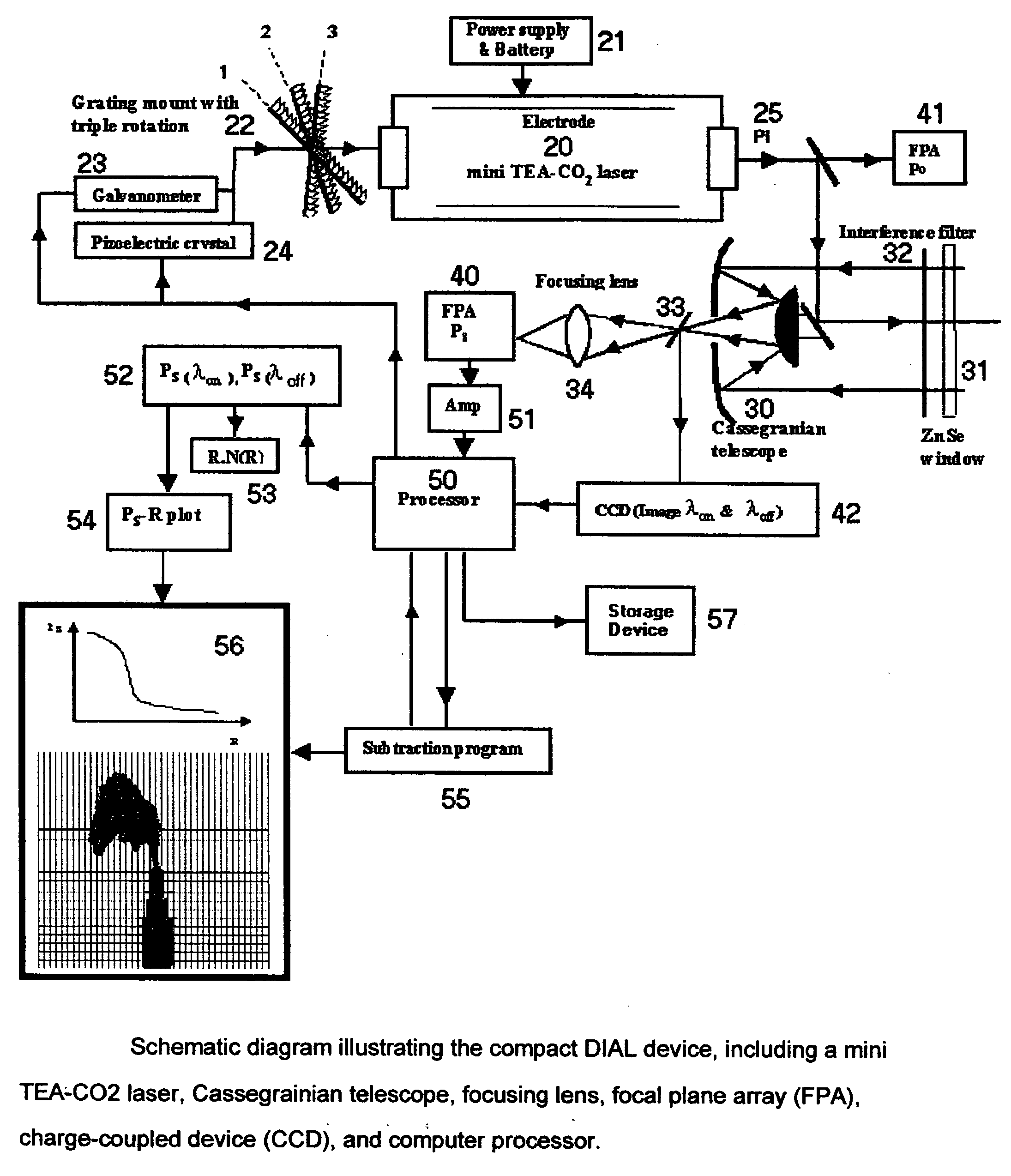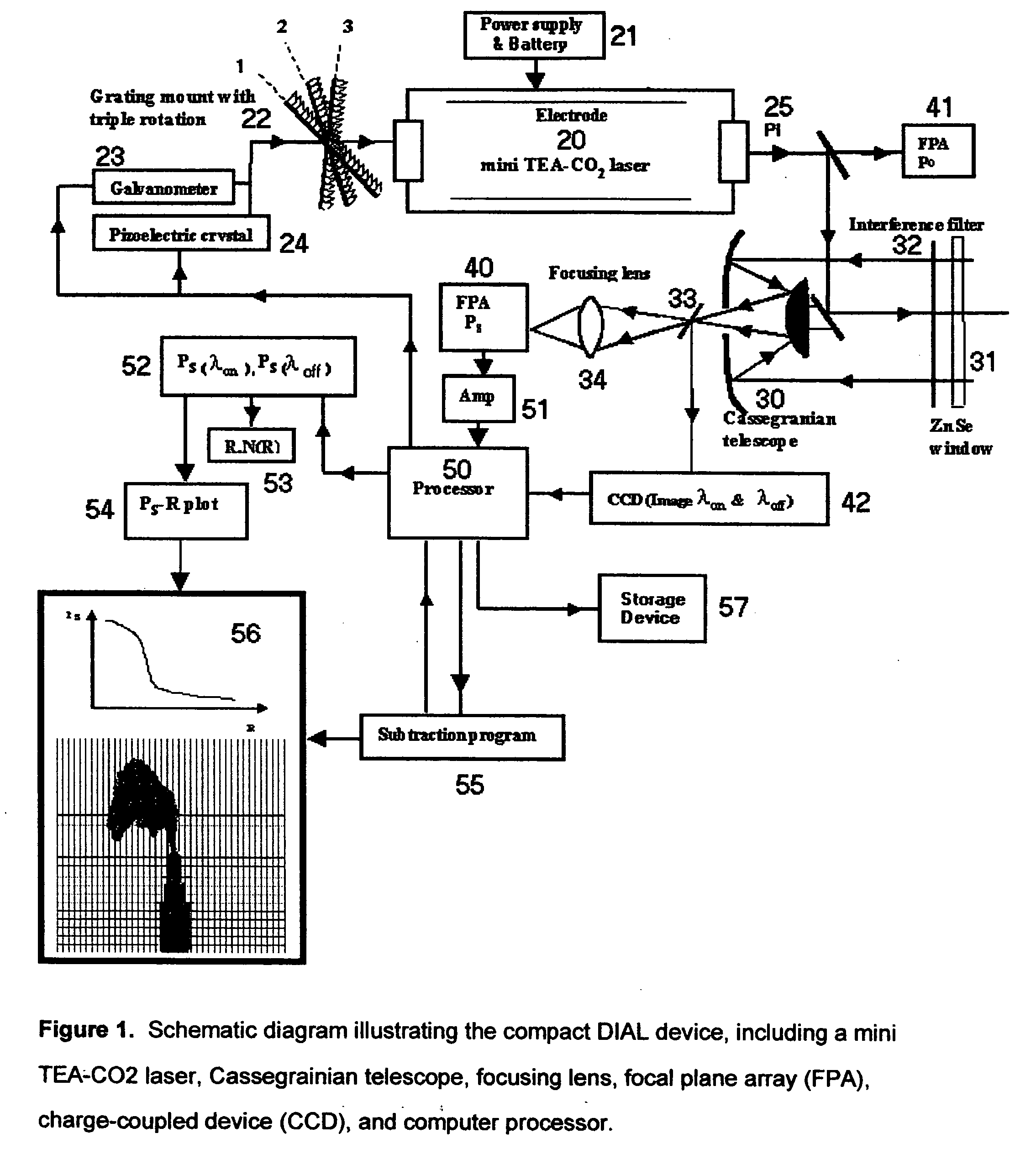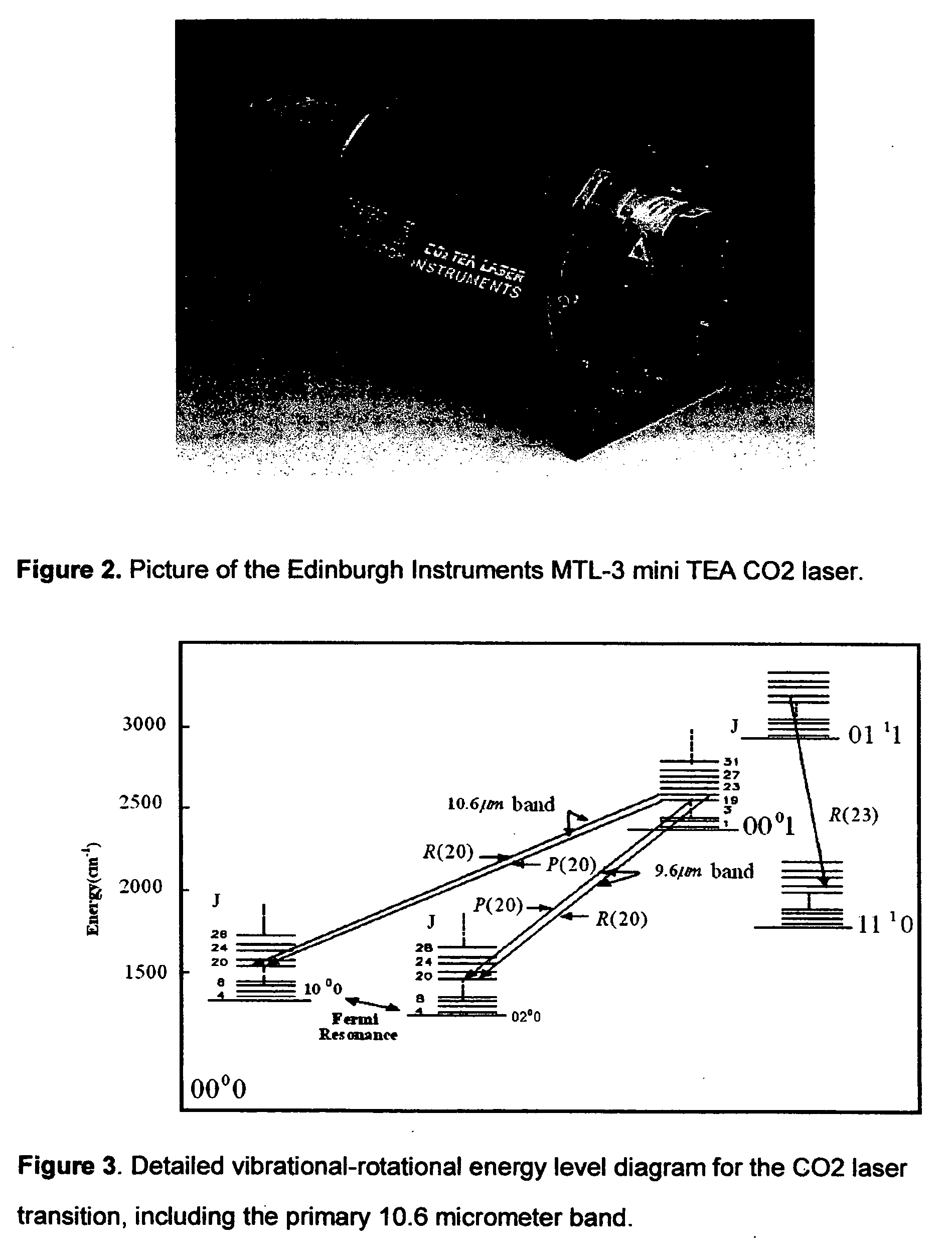Machine for detecting sulfur hexafluoride (SF6) leaks using a carbon dioxide laser and the differential absorption lidar ( DIAL) technique and process for making same
a technology of sulfur hexafluoride and carbon dioxide laser, which is applied in the field of machine for detecting sulfur hexafluoride (sf6) leaks using carbon dioxide laser and differential absorption lidar (dial) technique and process for making same, can solve the problems of 900 times more damage, time-consuming and expensive, and cost to the utility industry, and achieves the effect of minimalism of manipulation
- Summary
- Abstract
- Description
- Claims
- Application Information
AI Technical Summary
Benefits of technology
Problems solved by technology
Method used
Image
Examples
Embodiment Construction
[0052] Detailed descriptions of the preferred embodiment are provided herein. It is to be understood, however, that the present invention may be embodied in various forms. Therefore, specific details disclosed herein are not to be interpreted as limiting, but rather as a basis for the claims and as a representative basis for teaching one skilled in the art to employ the present invention in virtually any appropriately detailed system, structure or manner.
[0053] New sensors for remote monitoring of specific gaseous agents or other pollutants released into the environment are currently being developed by various groups using multiple techniques, as highlighted in the previous sections. A number of the optical remote-sensing techniques for detecting, identifying and quantifying signature of the plumes are possible, including the infrared differential absorption lidar (DIAL) technique. To detect gaseous leaks of sulfur hexafluoride (SF6), the DIAL technique is ideal since it can be use...
PUM
| Property | Measurement | Unit |
|---|---|---|
| wavelength | aaaaa | aaaaa |
| wavelength | aaaaa | aaaaa |
| wavelength | aaaaa | aaaaa |
Abstract
Description
Claims
Application Information
 Login to View More
Login to View More - R&D
- Intellectual Property
- Life Sciences
- Materials
- Tech Scout
- Unparalleled Data Quality
- Higher Quality Content
- 60% Fewer Hallucinations
Browse by: Latest US Patents, China's latest patents, Technical Efficacy Thesaurus, Application Domain, Technology Topic, Popular Technical Reports.
© 2025 PatSnap. All rights reserved.Legal|Privacy policy|Modern Slavery Act Transparency Statement|Sitemap|About US| Contact US: help@patsnap.com



